Overgrown Rose Bush Pruning Tips for Gardeners
Updated: Aug. 31, 2023
Don't give up on an old overgrown rose bush. Get proper pruning tips to reinvigorate your plant for beautiful blooms.
Overgrown Rose Bush Care

This is a story about an old, overgrown rose bush. This poor rose hadn’t been cared for or pruned for a few years. To be honest, I think it looks great considering the lack of care it had received. But if you looked further inside, you would see lots of dead wood.
This rose bush was located on a small farm that my mother, sister and her family had recently moved to.
I absolutely love roses and couldn’t wait to help this plant. When I started, I had no idea what variety this rose was. However, I was pretty sure that it was a shrub rose, and it had a lot of old, unproductive growth that needed to be removed.
Here’s how I got started.
Check out the top 10 best roses for gardeners to grow.
Pruning the Overgrown Rose
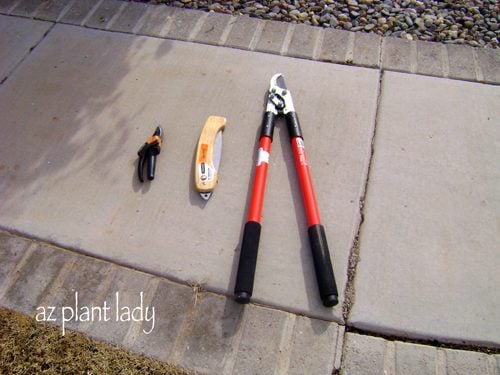
First things first: I highly recommend wearing gardening gloves and long sleeves so you don’t get hurt by the thorns.
Because there was so much thick growth, I just started pruning in order to make a hole so that I could reach inside and prune the old wood. When pruning, it is saves you a lot of work if you first cut toward the base of larger branches. This prevents you from making multiple pruning cuts of smaller branches.
When pruning roses, I normally remove half to two-thirds of the growth. For this rose bush, I decided to remove quite a few of the large old branches (called canes) at the base of the rose because they no longer produced as many newer branches and flowers as the younger branches did.
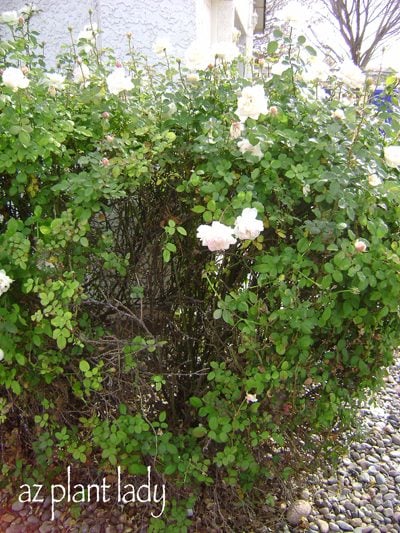
I removed the old and dead canes and then selected the green, healthy canes that I would keep. Then I pruned the healthy canes back to an outward facing bud and cut them at a 45 degree angle.
I used my hand pruners for the small canes and then switched to my loppers for the larger canes. Soon I had a large pile of clippings. Thankfully I had some great helpers (my kids).
Learn when to fertilize roses and peonies.
How to Remove Rose Cane Borers
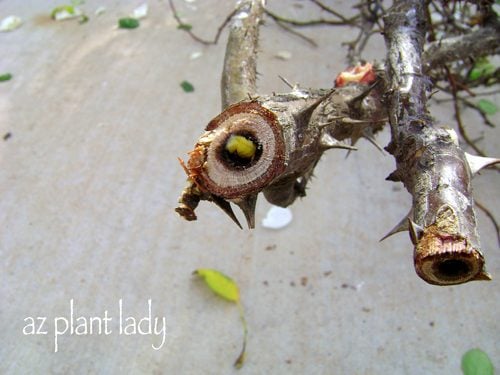
While cutting back some of the old canes, I discovered a cane borer that had burrowed its way down into this rose cane. Cane borers enter through the top of rose canes and burrow their way down, causing death and damage.
To remove cane borers, simply prune the cane until there is no longer a hole down through the center. To prevent borers, simply apply white glue to the tops of pruned canes, which will keep them out.
Here’s how to grow roses from cuttings.
Two Overgrown Rose Bushes
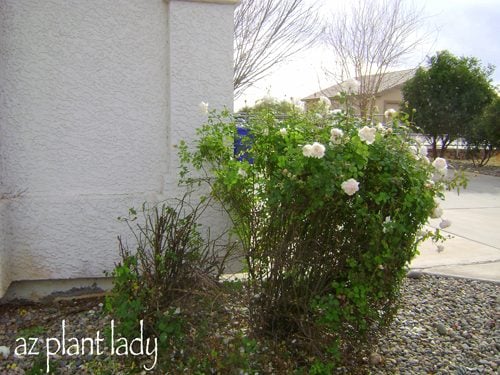
As I continued pruning back the rose bush, I came upon an unexpected discovery. There were actually two rose bushes that had grown together! I also found examples examples of bad pruning like this one (below). You can see where the cane turned brown and died.
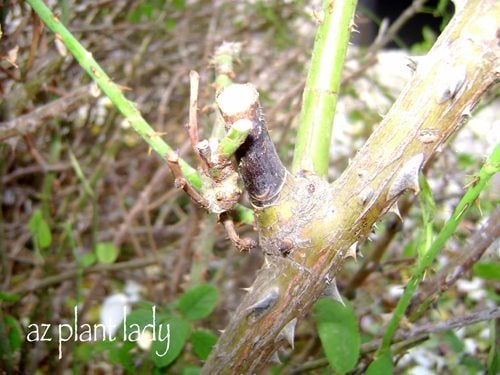
When pruning rose canes, trim back to a bud or back to the base of a larger cane.
Find out why Knock Out Roses are a gardener’s dream come true.
Cleanup and Disease Prevention
The final step was to remove all the remaining leaves and clean up any surrounding fallen rose leaves. I did this because the leaves can harbor fungal diseases that will reinfect new rose leaves.
Roses not blooming? Here’s what to do.
Identifying the Nameless Rose
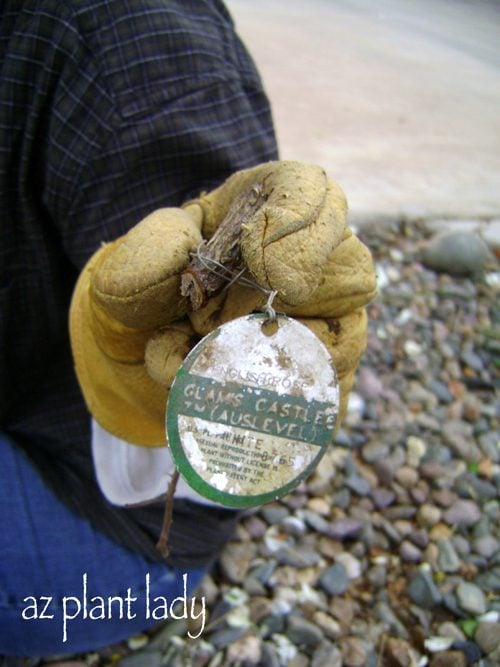
As I was finishing up, I discovered a surprise buried in the soil. I found the original label for the rose bushes. They are the variety ‘Glamis Castle’, which is an ever-blooming shrub rose. These roses were no longer neglected or nameless.
Psst—have you ever seen Green Roses?
After Pruning: The Finished Result
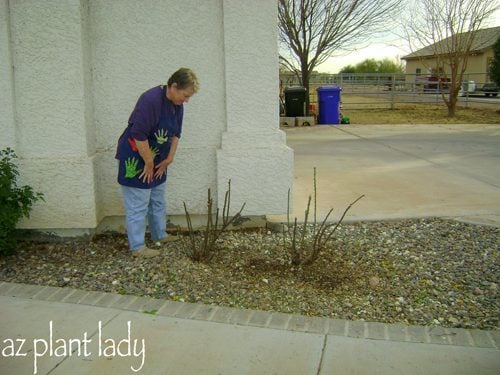
After I finished pruning, the rose bushes hardly resembled their former selves. I think my mother was a bit surprised at the how different they looked. A few months later, they were full of healthy foliage and beautiful blooms.
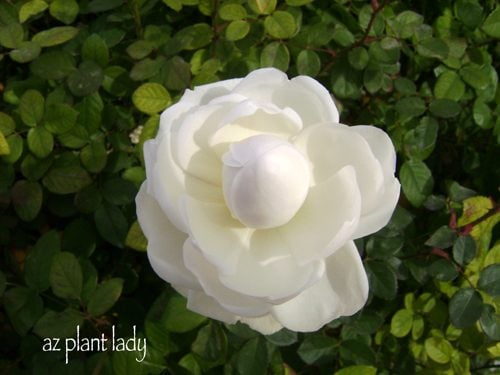
Although the pruning was drastic, it needs to be done with most of today’s modern rose types including grandiflora, hybrid tea and floribunda. As they say, “beauty hurts” and proper pruning ensures that there will be more beautiful blooms in spring.
When to prune your roses depends on which USDA zone you live in:
- Zones 6 to 8 prune back in February.
- Zones 9 to 10 prune back in January.
- All other zones, prune back in early spring, before new leaves grow
Don’t miss pretty pictures of roses from home gardeners.



















